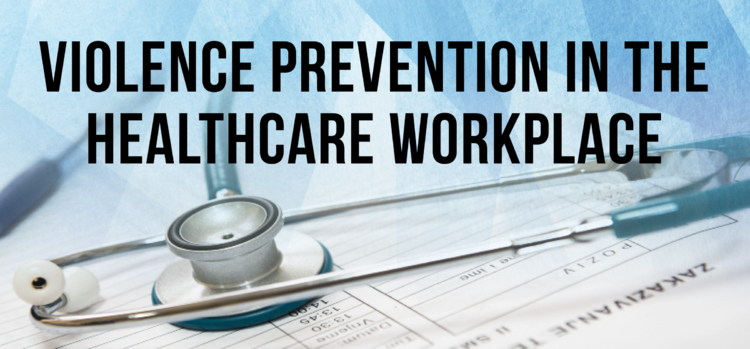Thursday, October 11, 2018
9:00 AM - 9:05 AM: Welcome
9:05 AM - 9:55 AM: Workplace Violence Research Updates with Robert Harrison, MD, MPH
The research and scientific basis for workplace violence prevention has advanced considerably in the last decade. There are strategies that can be implemented by employers and workers to reduce the risk of workplace violence. Data gaps remain, however, these gaps can be identified through study designs that capture the effect of interventions.
Learning Objectives:
- Identify the current state of research knowledge about the risk factors for workplace violence
- Review the effectiveness of interventions
- Develop strategies for future research
9:55 AM - 10:25 AM: Shiftwork & Violence with Steve Sun
This presentation will explore the role shiftwork plays in violence against nurses.
Learning Objectives:
- Discuss the severity of violence in the workplace, especially in healthcare settings
- Analyze data from a case control questionnaire and discuss results
10:25 AM - 10:40 AM: Break
10:40 AM - 12:00 PM: Cal OSHA Workplace Violence Prevention in Health Care: A New Regulation with Kevin Graulich, CIH
This presentation will provide information on how and why this regulation came to be. The presentation will include background into how workplace violence affects the health care industry. We will discuss the scope of the regulation as well as cover the elements of the workplace violence prevention program, and how those elements are to be presented to workers that are affected by the program. We will also discuss where you can find additional information on workplace violence, this regulation, and its effect on the healthcare industry.
Learning Objectives:
- Discuss the background behind the regulation
- Review the scope of the standard
- Identify the basic requirements of the standard so healthcare workers can help make their program successful
12:00 PM - 1:00 PM: Lunch
1:00 PM - 2:00 PM: The Anatomy of a Dangerous Situation with Rachel Odes, MS, RN, and Eddie Johnson
This presentation will explore circumstances that can lead to violence in the acute psychiatric setting. Focus areas will include worker/staff behavior, training, and preparation; environmental factors such as unit overcrowding; patient factors such as increased stimulant uses and fewer available sub-acute beds; and community factors such as displacement and the Bay Area housing crisis.
Learning Objectives:
- Review the experience of workplace violence from the perspective of front-line staff
- Describe multiple factors which contribute to workplace violence in the psychiatric setting
- Discuss the role of crisis prevention training in minimizing harm to workers in high-risk settings
This presentation will explore difficulties in implementing the workplace violence standard, and in assessing the effectiveness of workplace violence prevention plans.
Learning Objectives:
- Recognize common problems found in workplace violence prevention programs
- Identify ways for employees to be involved in workplace violence prevention program development
- Identify ways that employers and unions can support workers to engage in workplace violence training and program development
2:45 PM – 3:00 PM: Break
3:00 PM – 5:00 PM: Harm Reduction Strategies for High Risk Environments Panel Discussion
3:00 PM – 3:30 PM: Team-Based Evaluation & Management of Behavioral Threats in Healthcare: Lessons Learned in One VA with Natalie Purcell, PhD, MPA, and Michael Drexler, PhD, CPRP
This presentation will describe steps the San Francisco VA’s workplace violence prevention team has taken to improve their approach to behavioral threat assessment and management, as well as key lessons learned.
Learning Objectives:
- Identify best practices for implementing or improving a healthcare workplace violence prevention program
- Identify potential problems that can decrease the effectiveness of a threat assessment process, as well as strategies to address/mitigate these problems
- Describe key considerations to keep in mind while recruiting and training new threat assessment committee members
3:30 PM – 4:00 PM: Bob Durand, CPP, CHEP, HEM, CHSS
This presentation will provide basic strategies and best practices on how to avoid danger from workplace violence in the healthcare setting. From understanding what is too close, when it is appropriate to engage security staff members, and how to get the most from their performance, these often overlooked concepts can reduce both the risk of violence and potential injury when violence is inevitable.
Learning Objectives:
- Discuss how basic spatial awareness in healthcare can lower risks of becoming a victim of violence
- Identify critical components of a security action plan and communication strategy when members of the security team are required to assist with violent patients
- Describe key components of an effective physical intervention strategy and why it's important to train for actions prior to engagement more than the intervention itself
- Discuss what it means to, and how working as, a team leads to incident and injury prevention
4:00 PM – 4:30 PM: Ellen Bachman, Gari-Lyn Richardson, and Sean Tracy
The California Department of State Hospitals is the one state department that was included in the requirements for the Workplace Violence Prevention in Healthcare regulations. Participants will learn from DSH Executive, Clinical Quality Improvement, and Environmental Health/Safety leader perspectives about the opportunities and challenges experienced with the implementation of these advanced employee safety requirements.
Learning Objectives:
- Review the California Department of State Hospitals working environment
- Describe the Department's efforts to implement new workplace violence prevention regulations in a standardized, enterprise-wide, coordinated manner to improve employee safety and achieve compliance
- Discuss the challenges and opportunities for clinical quality improvement methods to prevent assaults against staff
4:30 PM – 5:00 PM: Panel Q&A and Discussion




